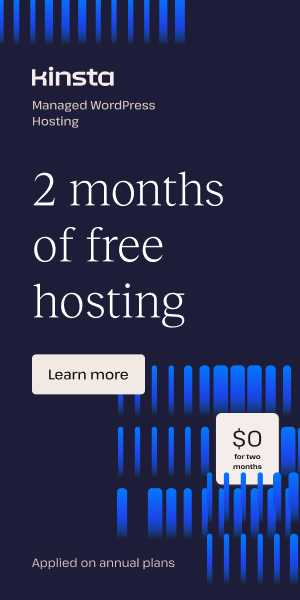E-commerce: Figma Designs to WooCommerce
Unlocking Seamless E-commerce Experiences with Custom WordPress Shop Designs
In today’s digital marketplace, the interface of your online store plays a crucial role in shaping customer experience and driving sales. Converting pixel-perfect Figma designs to WooCommerce lets retailers blend bespoke aesthetic appeal with powerful e-commerce functionalities. For brands in the USA, UK, and Canada looking to establish or revamp their online presence, transforming innovative UI/UX concepts into a fully functional WordPress shop design is now achievable with increased precision and efficiency.
Whether you’re a startup launching your first WooCommerce store or an established retailer aiming to upgrade your site, understanding the nuances of this e-commerce conversion process helps ensure your digital storefront is both beautiful and performance-optimized.
Why Choose WooCommerce for Your E-commerce Platform?
WooCommerce stands as the most widely adopted open-source e-commerce plugin for WordPress, favored for its versatility and robust feature set. Its ability to integrate with countless extensions and payment gateways, alongside a strong community and frequent updates, makes it a compelling choice for ambitious projects.
- Flexibility: WooCommerce supports everything from small boutiques to large-scale online stores.
- Customizability: Developer-friendly environment allowing bespoke themes and functionality.
- Seamless Integration: Works perfectly with WordPress CMS, empowering content marketers.
- Cost-Effective: Core plugin is free, making it accessible for even startups.
More businesses in North America and Europe are capitalizing on WooCommerce’s blend of usability and extensibility to launch scalable and visually compelling e-commerce shops.
Step-by-Step Guide: Translating Figma Designs into WooCommerce Stores
Successful figma to woocommerce conversion relies on a systematic approach to retain design integrity while embedding dynamic shopping functions. Below is an in-depth workflow shared by e-commerce experts for efficient migration:
1. Preparation and Project Planning
Start by reviewing the Figma file to identify all essential design components, such as:
- Headers and navigation menus
- Product catalog pages
- Individual product detail views
- Shopping cart and checkout flows
- Responsive design layouts for mobile and tablet
Setting up a local development environment using tools like XAMPP or MAMP, alongside version control systems like Git, helps maintain workflow efficiency and error tracking.
2. Exporting Design Assets from Figma
Properly exporting your design elements is crucial to preserve quality and keep load times low. Key points include:
- Export images in optimized formats such as JPG or WebP for photos, PNG for graphics with transparency.
- Use SVG for icons and logos to maintain crispness at any scale.
- Capture style properties directly from Figma’s code inspector to extract accurate fonts, colors, and spacings.
Having a well-organized asset folder structure aligned with your Figma prototype eases implementation.
3. Setting Up WooCommerce and WordPress
The backend setup involves:
- Installing WordPress on your server or local environment.
- Adding and activating the WooCommerce plugin from the WordPress plugin repository.
- Completing basic configuration such as currency, payment gateways, shipping rules, and tax options via WooCommerce’s guided setup wizard.
These preliminary steps lay the groundwork for linking front-end design with e-commerce capabilities.
4. Building a Custom Child Theme Aligned with Your Design
To avoid overriding WooCommerce or parent theme updates, create a child theme. Then implement your Figma designs by converting each interface component into:
- PHP templates to control page structures
- CSS/SCSS files to style elements according to your design aesthetics
- JavaScript if interactive elements or animations are required
Frameworks like Bootstrap or libraries such as jQuery can accelerate development without compromising design fidelity.
5. Integrating WooCommerce Functionalities
Mapping functionality onto your design is essential to deliver seamless shopping experiences. Typical tasks include:
- Displaying product listings dynamically fetched from WooCommerce database.
- Implementing AJAX-powered add-to-cart buttons for smoother UX.
- Customizing checkout flow to match design, including form styles and confirmation pages.
- Optimizing for mobile responsiveness and accessibility standards.
6. QA and Performance Optimization
Thorough testing verifies that the site behaves as expected across devices and browsers. Performance optimizations might involve:
- Caching solutions such as WP Rocket
- Image compression tools like TinyPNG
- Minification of CSS and JavaScript files
Tools like Google PageSpeed Insights help identify bottlenecks.
7. Launch and Ongoing Maintenance
Once live, monitor analytics, user feedback, and conversion funnels to fine-tune your shop. Agile iteration ensures your website evolves with market demands and customer expectations.
Case Study: Elevating a Boutique Brand with Custom WooCommerce Design
Consider a fashion boutique targeting customers across Canada and the UK that partnered with a Figma2WP service provider. The process involved:
- Custom design injection: Designers crafted a clean, trendy UI in Figma focusing on mobile-first navigation and quick product discovery.
- Precise asset export: SVG icons and product imagery optimized for web.
- Development and integration: The design was hand-coded into a WooCommerce child theme, utilizing responsive grids and AJAX cart updates.
- Launch success: The site saw a 35% increase in conversion within the first quarter, thanks to the smooth UX.
This example shows how a professional Figma2WP Service can convert creative vision into quantifiable business growth.
Benefits of Using a Professional Figma to WooCommerce Conversion Service
While DIY approaches exist, partnering with experts provides several advantages:
- Expertise in pixel-perfect implementation ensuring your design looks exactly as intended in browsers.
- Faster turnaround times thanks to streamlined workflows and experience working with WooCommerce’s ecosystem.
- Code quality and scalability to support future site growth.
- Responsive communication and support aligned to business goals.
For businesses targeting English-speaking countries like the USA, UK, and Canada, choosing a skilled partner can dramatically reduce conversion headaches and accelerate sales readiness. Check out Contact Us to discuss your next project and understand how seamless your e-commerce conversion could be.
Conclusion: Bringing Designs to Life with Scalability and Style
Transitioning from compelling Figma designs to a dynamic WooCommerce store merges creativity with commerce like never before, offering retailers an edge in the competitive e-commerce landscape. By following a structured conversion process—from design asset preparation to WooCommerce integration and optimization—you can deliver a WordPress shop that delights users and drives revenue.
For those who crave perfect pixel alignment combined with robust e-commerce features, leveraging professional figma to woocommerce services is the key to unlocking your online store’s true potential.
Take the next step toward a remarkable WordPress shop design by consulting with the experts and turning your Figma e-commerce vision into reality.
More From Our Blog
Unlocking the Power of Hands-On Web Design with Modern Tools In today’s digital age, the ability to craft your own website has transformed from a daunting technical challenge into an engaging creative process accessible to enthusiasts, DIYers, and professionals alike. Services like Figma2WP Service empower you to convert your design concepts into fully functional WordPress Read more…
Elevate Your Outdoor Presence with Cutting-Edge Garden Themes for WordPress Creating a captivating online presence for gardening businesses or outdoor-focused sites demands a skilled blend of aesthetics, functionality, and thematic relevance. This is where garden themes for WordPress shine—offering visually rich, user-friendly templates tailored to beautifully showcase plants, gardening products, and outdoor lifestyles. With the Read more…


